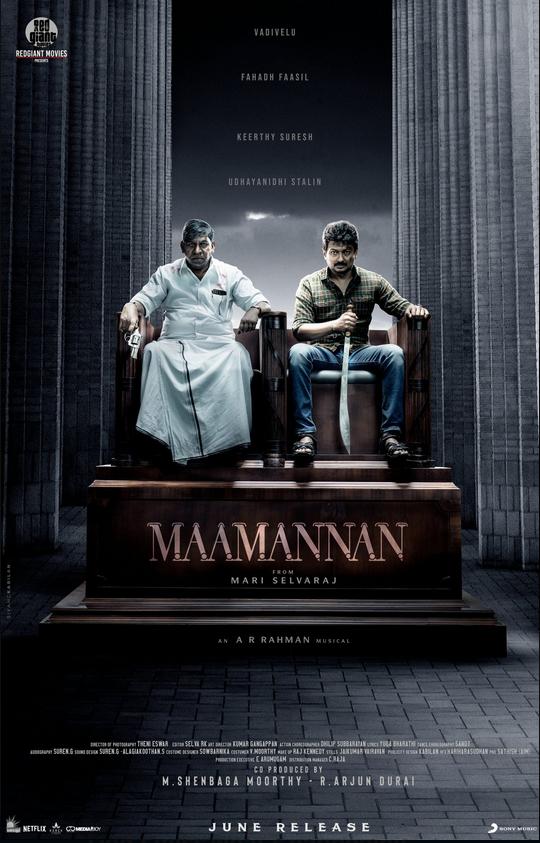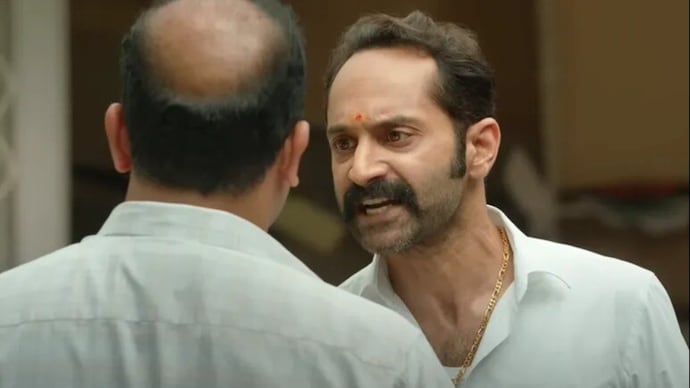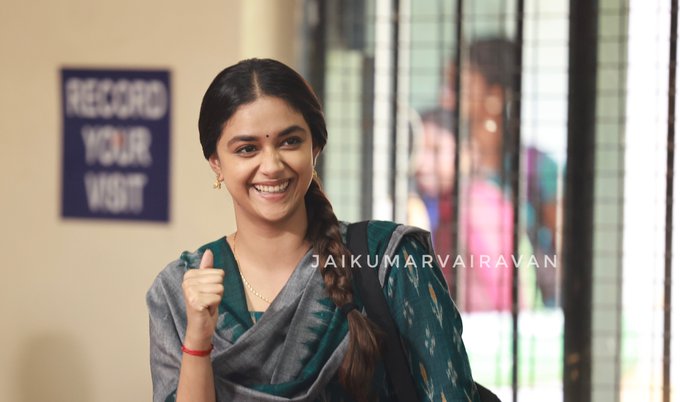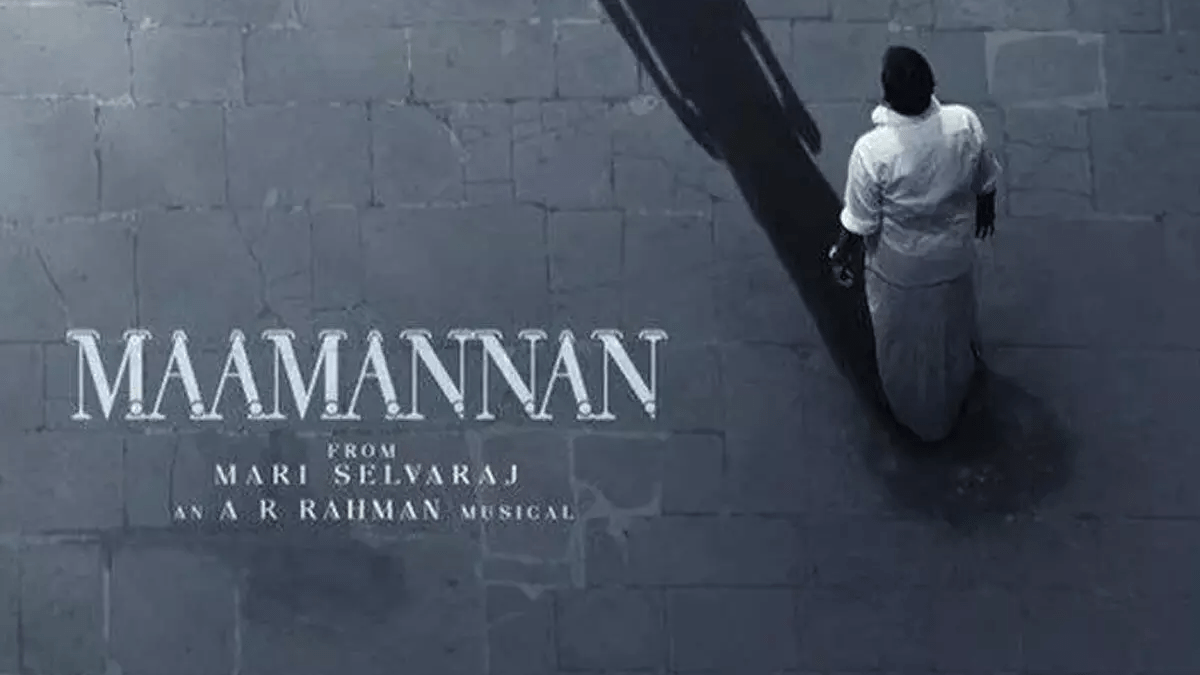There are few films where the performance is swiftly taken over by an antagonist and Maamannan released in June this year, is certainly one among them. Written and directed by Mari Selvaraj, casting Vadivelu, Fahadh Faasil, Udhayanidhi Stalin and Keerthy Suresh in the lead roles, the film continues to create momentum in the most sensational ways. The pertinent theme discussed in the film is the caste struggle that continues to operate even after overcoming class struggles in a complexly hierarchised society.
Struggles of the Dalit community as depicted in Maamannan
The reasons that lead the protagonist Veeran and the antagonist Rathnavelu to come into conflict are inter-twined closely with caste and class struggles, especially those faced by a Dalit family. The amount of respect owed by an individual in many parts of the country is still weighed and measured by one’s origin and ancestry, and not the character and actions of the individual.

The titular character of the film Maamannan, played by the veteran actor Vadivelu, is an MLA and the father of Veeran who is forced to act out the hypocrisies of society. Maamannan joins the party and becomes an MLA, in the long run, to safeguard his son from the frightening caste experience. This breaks the bond between father and son.
Despite his rise in power from the status of a common farmer, Maamannan still faces the challenge of casteist discrimination whereby Rathnavelu, though lower to him in political position, assumes power and control over the others owing to his high caste standing.
Despite his rise in power from the status of a common farmer, Maamannan still faces the challenge of casteist discrimination whereby Rathnavelu, though lower to him in political position, assumes power and control over the others owing to his high caste standing.
Rathnavelu on the other hand believes it to be his birthright to rule and control the Dalits in order to keep their casteist legacy alive. Therefore, controls them by denying them basic self-respect. The bloodthirsty race dogs owned by Rathnavelu are deemed more respectable than the Dalits.

Even though he keeps them in a mansion, he continues to mercilessly kill the dogs who have lost in the races. His cruel treatment and killing of the dogs are symbolic of his treatment towards the others around him. Therefore, in the same way, he mercilessly kills both the politician and his failed dog.
The festering wound of Dalit trauma
The incident in the temple pond and the consequent deaths of young children who were friends of Veeran is one among the many major events seen in the country. Even when education tries to make people aware that the many taboos prevalent in society are unscientific, inhuman and illogical, many still continue to practice them as the sole means of keeping control to stroke their caste ego. It is this attitude that leads them to attack the free tutorials run by Leela in the film.
The deep wound suffered by Veeran during his childhood days makes him insecure, severing his relations at home. But he learns physical self-defense and continues to teach them to the youth. His traumatised memory keeps him tangled and forever striving for equality which resurfaces after their conflict with Rathnavelu.

The indignation from the disrespect that Veeran and Maamannan experience at Rathnavelu’s home strengthens their soul to fight for themselves and the thousands of people beside them. Several scenes in the film clearly show how Dalits have been denied self-respect in spite of the many advancements they have achieved. The photograph of Ambedkar and the idol of Buddha found at Maamannan’s residence vividly shows the emancipation experienced by the oppressed communities with the help of these figures.
The politics of celebrating the casteist antagonist in Maamannan
More than the success of the film, the popularity and currency received by the character of Rathnavelu, the casteist antagonist of the film is a serious concern to be acknowledged. Rathnavelu is portrayed as a cold-blooded brute who does not care about anything other than his pride and legacy. Rathnavelu always remembers his father telling him that he should never give way to those below him, even if he supports those above him or those by his side.
This serves as a sort of reassurance to him, that tells him that following his personal principles is always right and that he should never bow before anyone or give up his casteist family pride. Hence, the popularity acquired by the character of Rathnavelu is a direct exemplification of the celebration for his casteist pride.

More problematically, people like Rathnavelu reassure themselves that their cruel acts should be followed by others proudly. It can create a lot of confusion and can destroy the values of secularism and equality which had been dictated and established through much labour in the country.
The silent yet powerful women characters of Maamannan
Since the story is set in a strongly patriarchal society, it is the male characters who get to act out their politics and pride. The female figures are mostly silent except for Leela who is empowered and made herself a role model for her community. She represents the nineties generation who have become empowered through education.
Leela is also the representative of the Tamil women who used their potential for their community. She, along with her friends, runs a free local tutorial for poor students and hence incurs the wrath of Rathnavelu’s institutions. For him and his family, education is a business and not a tool for empowerment. But Leela and her friends understand that only adequate education can purge their society of evils.

The other women characters include Rathnavelu’s wife Jyothi and Veeran’s mother, Veermayi. Veeramayi is a silent and powerful character who communicates the plight of her community through her explicit body language. Though initially she talks and behaves like a normal mother, later she is transformed into a muted entity after the conflict with the antagonist. The fear she had to experience during Veeran’s childhood, comes back, disabling her communication and routine.
While the male characters, Maamannan and Veeran, empowered through education and circumstances, can lead forth, Veermayi assumes a silent approach.
While the male characters, Maamannan and Veeran, empowered through education and circumstances, can lead forth, Veermayi assumes a silent approach. After the physical fight with Rathnavelu, Maamannan touches her feet while comforting her. A husband touching the feet of his wife is also symbolic of her relevance which is equal to that of a deity in the family.
After the physical fight with Rathnavelu, Maamannan touches her feet while comforting her. A husband touching the feet of his wife is also symbolic of her relevance which is equal to that of a deity in the family.
Jyothi, on the other hand, represents the patience that Rethnavelu does not possess. She is a calm individual who understands the behaviour of her husband. Being too powerless to influence him, she tolerates him and her situation. But Jyothi’s success in the election reveals her potential, which Rathnavelu has always neglected and continues to neglect.

Had he understood her leadership qualities, it would have helped him win the election. Though Jyothi is a part of the community where women exist only within the family, she conveniently breaks out and reveals her inner self by climbing the steps of the legislative assembly.
Overall, Maamannan is a gritty depiction of Dalit trauma and caste struggle, a lived reality for a large section of Indian society.
About the author(s)
Vidhu (she/her) is an emerging writer with Masters in English language and literature, keen on learning the politics of the world around her. She has dreams to create a career in journalism and writing, where she unburdens her self. She has a great taste for movies from varies geographical spans and pens down poetry in magical charms. She is open to projects or research centring on humanities.






